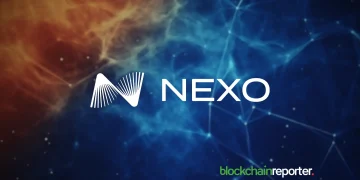The textbook definition of blockchain is a public, decentralised ledger that records transactions across a network. It stores data in blocks — they can’t be altered once entered—linked together via cryptography.
What we sometimes don’t find in the blockchain definition is that it encompasses four distinct types: public, private, consortium, and hybrid. Each of them cater to unique needs and use cases.
Whether you’re a representative of an organisation, a developer, or just a keen observer of the Web3 blockchain technology, we’ll walk you through a clear comparison of the four blockchain types, with a bonus fifth in tow: AI blockchains.
1. Public Blockchains: The Foundation of Decentralisation
Public blockchains are the original and most widely recognised form of blockchain technology. Bitcoin and Ethereum are prime examples of it; anyone can join these permissionless networks to participate, contribute, and validate transactions.
This open-access nature makes them instrumental in fostering transparency and democratisation of data.
Pros and Cons of Public Blockchains
| Transparency: Since all transactions are visible on the ledger, it ensures a high level of transparency | Low performance: Public blockchains can be slow and resource-intensive due to the extent of data processing required |
| Security: Public blockchains are highly secure due to their decentralised nature and consensus mechanisms | Scalability issues: Managing a large number of transactions can be challenging and often results in slower growth |
| Decentralisation: They remove the need for a central authority, which can lead to more trust and resilience in the network | Less privacy: Since all transactions are publicly visible, user privacy is reduced |
| Innovation: Public blockchains foster innovation by providing an open platform for developers to build dApps and experiment with new ideas | Energy consumption: Some public blockchains operating on Proof-of-Work consume significant amounts of energy, raising environmental concerns |
Prominent public blockchains:
- Bitcoin: The pioneering blockchain that introduced the concept of decentralised digital currency
- Ethereum: Known for its smart contract functionality, allowing for the creation of dApps
- Solana: A high-performance public blockchain known for its impressive transaction speed and low fees
- Polkadot: Enables interoperability between different blockchains, promoting a more connected and functional ecosystem
- Litecoin: Often referred to as the silver to Bitcoin’s gold, offering faster transaction confirmation times
Possible use cases:
- Cryptocurrencies: Bitcoin, Ethereum, and other cryptocurrencies are built on public blockchains, enabling secure and transparent peer-to-peer transactions
- Decentralised Finance (DeFi): Public blockchains provide the infrastructure for DeFi applications, offering financial services without intermediaries
2. Private Blockchains: Controlled and Secure Enterprises
Private blockchains are a type of blockchain technology where access is restricted to a specific group of participants. Unlike public blockchains, which are open to anyone, private blockchains offer increased privacy and control, making them suitable for businesses and organisations that need to maintain confidentiality.
They are also used frequently to streamline internal processes, enhance data security, and improve efficiency.
Pros and Cons of Private Blockchains
| Privacy: Since access is restricted, sensitive information remains secure, preventing unauthorised access | Lack of transparency: Since it’s not open to the public, it lacks the transparency and accountability offered by public blockchains |
| Control: Participants can set permissions and control who can read from or write to the blockchain | Centralisation: Often, private blockchains have fewer nodes, leading to centralisation and reduced decentralisation benefits |
| Flexibility: Organisations can tailor the blockchain to their specific needs without worrying about public network constraints | Trust issues: Participants must trust the entity managing the private blockchain, which can be a concern in some scenarios |
Prominent private blockchains:
- IBM Blockchain
- R3 Corda
- Hyperledger Fabric, Hyperledger Sawtooth
Possible use cases:
- Supply chain management: Private blockchains can track goods and products throughout the supply chain, ensuring transparency and authenticity while maintaining data privacy
- Healthcare: Private blockchains can securely store and share patient data, facilitating efficient and confidential healthcare management
3. Consortium Blockchains: Collaborative and Efficient
Consortium blockchains, also known as federated blockchains, fall between public and private blockchains. They operate under the leadership of a group of organisations rather than a single entity, making them ideal for collaborative efforts among companies or institutions.
Pros and Cons of Consortium Blockchains
| Secure and private: Enhanced security and privacy due to their permissionless nature, as compared to public blockchains | Less decentralised: Although more decentralised than private blockchains, consortium blockchains are not as decentralised as public blockchains, which could present a point of vulnerability |
| Scalable and efficient: More scalable due to the controlled nature of the network, allowing for higher transaction speeds and lower costs | Shared governance problems: Managing the interests and contributions of multiple organisations can be challenging and may slow down decision-making processes |
| Exclusive access: Only authorised participants can validate transactions and access the network | Limited transparency: The level of transparency is lower compared to public blockchains, which might become an issue if transparency and public verifiability are of prime importance |
Prominent consortium blockchains:
- R3 Corda
- Hyperledger
- Energy Web Foundation
Possible use cases:
- Trade Finance: Consortium blockchains can streamline trade finance processes, reducing paperwork and improving efficiency while maintaining data confidentiality
- Healthcare data sharing: Consortium blockchains can enable secure and controlled sharing of patient data among healthcare providers, improving patient care and research collaboration
4. Hybrid Blockchains: Best of Both Worlds?
Hybrid blockchains are designed to leverage the strengths of both public and private blockchains, offering the ideal combination of decentralisation and control.
This type of blockchain enables organisations to benefit from the heightened security and transparency of public blockchains, while retaining the privacy and control of private blockchains.
Essentially, hybrid blockchains present the ‘best of both worlds’ solution.
Pros and Cons of Hybrid Blockchains
| Flexibility: Can be customised to suit various applications and requirements, making them versatile in numerous industries | Complexity: The combination of public and private features can make hybrid blockchains more complex to implement and maintain |
| Security: The combination of public and private features ensures high security while maintaining necessary privacy for sensitive information | Interoperability issues: Integrating hybrid blockchains with existing systems and other blockchains might pose certain compatibility challenges |
| Transparency: Public nodes can audit the transactions without compromising the confidentiality of sensitive data, ensuring a balanced approach to transparency | Regulatory uncertainty: The mixed nature of hybrid blockchains can sometimes lead to ambiguous regulatory statuses, complicating compliance efforts |
Prominent hybrid blockchains:
- Dragonchain
- XinFin
Possible use cases:
Hybrid blockchains are well-suited for various applications, such as managing land registries, where both public transparency and private security are essential. Additionally, they hold promise in blockchain game development, where they can ensure secure, transparent transactions while preserving user privacy.
- Government services: Hybrid blockchains can be used for land registration, identity management, and other government services, offering transparency and efficiency while maintaining data privacy
- Voting systems: The security and transparency of voting systems can be boosted, ensuring the integrity of elections while protecting voter privacy
- GameFi: There is promise in hybrid blockchains enabling secure, transparent in-game transactions while preserving gamers’ data privacy
AI Blockchain, the Bonus Fifth
Although considered nascent, AI blockchains are sure to feature permanently in the conversation, no matter which blockchain type one chooses. By making smart contracts even smarter, AI blockchains are already uncapping limitations faced by traditional smart contracts, enabling them to process vast amounts of data, make intelligent decisions, and adapt to dynamic situations. That helps to alleviate some of the cons you’ve read in the four blockchain types thus far: Public, private, consortium, and hybrid.
aelf: A High-Performance Layer 1 AI Blockchain
aelf is accelerating this AI blockchain adoption after successful partnerships with top AI technology providers. As an interoperable, customisable, and AI-powered blockchain platform, aelf offers a robust infrastructure for a smoother building experience, ensuring scalability and flexibility for various dApps.
Key features:
- AI integration: aelf leverages AI to optimise smart contract execution, predict network congestion, and intelligently allocate resources, enhancing overall performance and efficiency
- Developer-friendly tools: aelf provides an AI-enhanced environment with natural language processing (NLP) for simplified smart contract creation and AI-powered chatbots for real-time support, making blockchain development more accessible
- Real-world applications: aelf’s AI blockchain has a wide range of potential use cases, including DeFi, gaming, supply chain management, and more
*Disclaimer: The information provided on this blog does not constitute investment advice, financial advice, trading advice, or any other form of professional advice. aelf makes no guarantees or warranties about the accuracy, completeness, or timeliness of the information on this blog. You should not make any investment decisions based solely on the information provided on this blog. You should always consult with a qualified financial or legal advisor before making any investment decisions.
About aelf
aelf, an AI-enhanced Layer 1 blockchain network, leverages the robust C# programming language for efficiency and scalability across its sophisticated multi-layered architecture. Founded in 2017 with its global hub in Singapore, aelf is a pioneer in the industry, leading Asia in evolving blockchain with state-of-the-art AI integration and modular Layer 2 ZK Rollup technology, ensuring an efficient, low-cost, and highly secure platform that is both developer and end-user friendly. Aligned with its progressive vision, aelf is committed to fostering innovation within its ecosystem and advancing Web3 and AI technology adoption.
For more information about aelf, please refer to our Whitepaper V2.0.























